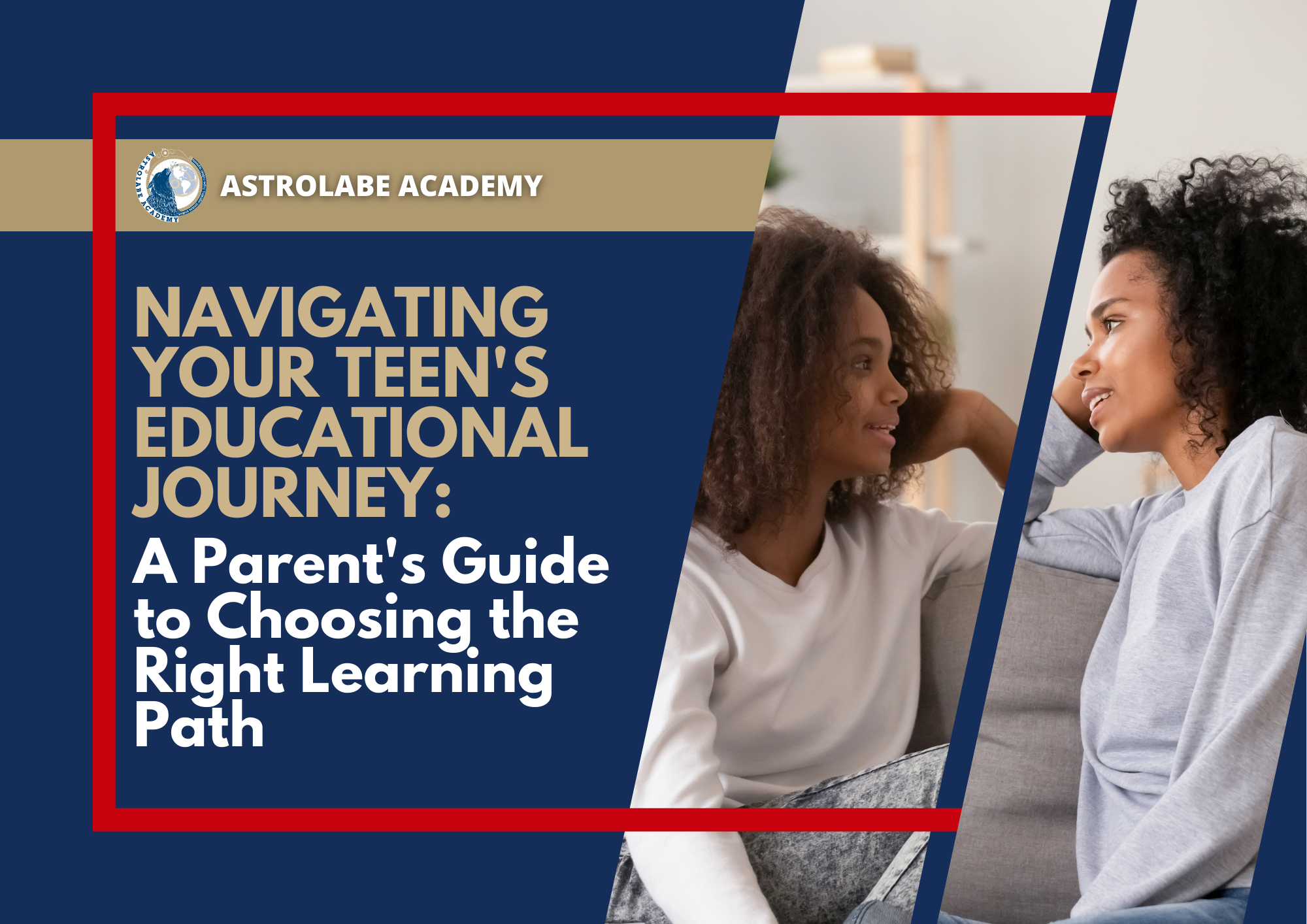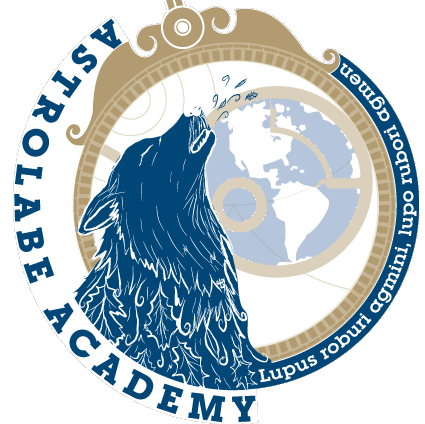Blog
Navigating Your Teen's Educational Journey
A Parent’s Guide to Choosing the Right Learning Path
As parents, watching our teens grapple with educational choices is both a pivotal and challenging experience. In a world where education is rapidly evolving, the traditional one-size-fits-all approach often falls short in meeting the diverse needs of our teens. This is where the importance of choosing the right learning path comes into play – a decision that can significantly impact your teen’s academic success and overall well-being. Here’s a comprehensive guide to help you navigate this critical phase in your teen’s life.
Understanding Your Teen’s Needs and Interests
The first step in this journey is to understand your teen deeply. Every child has unique strengths, challenges, and interests. Start by observing their natural tendencies. Does your teen enjoy hands-on projects more than reading textbooks? Do they excel in a group setting or prefer working alone? Such observations are crucial in identifying the most suitable learning environment.
Engaging in open and honest conversations with your teen is equally important. Discuss their likes and dislikes about their current school experience, their aspirations, and how they feel about different subjects. This communication not only aids in understanding their preferences but also makes them feel valued and involved in the decision-making process.
Exploring Educational Options
Today’s educational landscape offers a plethora of options, ranging from traditional schools to alternative education models like homeschooling, unschooling, and microschools. Each model comes with its own set of pros and cons.
- Traditional Schools: While offering structure and a broad curriculum, they may lack in providing individual attention and catering to specific interests.
- Homeschooling: Offers flexibility and a personalized curriculum but can require a significant time commitment from parents.
- Unschooling: Focuses on learning led by the child’s interests, promoting autonomy but might lack in structured learning.
- Microschools: Small, community-based schools that offer a more personalized approach but may have limited subject options.
Researching these models and understanding which aligns best with your teen’s learning style and interests is key.
Evaluating Curriculum Flexibility and Content
Curriculum plays a pivotal role in your teen’s education. Consider curriculums that offer flexibility, cater to your teen’s interests, and challenge them intellectually. For instance, if your teen is passionate about the arts, a curriculum emphasizing creative subjects would be beneficial. Moreover, in today’s digital age, exposure to technology and its practical applications is invaluable.
Social and Emotional Development
The social and emotional aspect of education is as crucial as academics. An ideal learning path should offer opportunities for social interactions, teamwork, and emotional growth. Look for educational settings that not only focus on academic excellence but also on developing emotional intelligence, resilience, and social skills.
Practicalities and Logistics
Practical considerations like location, schedule, and financial implications also play a significant role. For instance, if you’re considering homeschooling, think about whether your family schedule can accommodate it. Similarly, the location and cost of a microschool are essential factors to consider.
Visiting Schools and Programs
Visiting schools and programs can provide valuable insights. Attend open days, meet with educators, and observe the school environment. These visits can offer a clearer picture of what to expect and how well your teen might adapt to the new setting.
Gathering Feedback
Seeking feedback from other parents and students who have experience with the educational paths you’re considering can be incredibly insightful. Joining online forums, local parent groups, or attending community meetings can provide real-life perspectives and tips.
Making the Decision
After thorough research and consideration, it’s time to make a decision. Remember, this decision is not set in stone. Be open to reassessing and making changes if needed. The goal is to find a path where your teen feels challenged, supported, and engaged.
Conclusion
Selecting the right educational path for your teen is a process that involves careful consideration, research, and open communication. It’s about finding a balance between their academic needs, personal interests, and overall well-being. As parents, our role is to guide and support our teens through this journey, ensuring that the path they choose leads to a fulfilling and enriching educational experience. Download our guide to keep handy as you explore and consider the options.
In our “Brilliant But Struggling” workshops, we delve deeper into these aspects, offering personalized guidance and support. If you’re interested in a workshop in your area, feel free to reach out. Together, we can ensure that our teens not only succeed academically but also grow into well-rounded, happy individuals.
Do you have any questions or concerns about this educational journey? I’m always here to help. Let’s reconnect with our children by embracing self-directed learning!
--------------------------
Join the discussion about this and other high school education topics in our Facebook Group "Alternatives to High School". The goal of the group is to give parents a place to discuss options to public/private school and standardized curriculum as well as share resources for educating teens.
EDCHAT SERIES
Busting the Myths of Education
Part 1: Self Directed Education
Part 3: Myth Busting-Traditional High School Education is the Only Path to Success
Part 4: Myth Busting-Alternative Education and the Fear of "Gaps"
Part 5: Myth Busting-Do Self-Directed Learners Miss Out on Learning Scheduling & Prioritization?
Part 6: Myth Busting-Learning to Sit Still & Focus
Part 7: Myth Busting-Becoming Well-Rounded Outside Traditional Education
Part 8: Myth Busting-They Won't Have Study Stamina
Part 9: Myth Busting-Beyond Traditional Curriculum
Part 10: Rethinking the "Necessities" of Education
Part 11: Preparing for College Beyond Traditional High School
Part 12: Building Bridges – Reconnecting with Your Teen
Part 13: Navigating Your Teen's Educational Journey
Part 14: Unveiling Emotoional Intelligence: A Deep Dive With Asttrolabe Academy's Teens
Part 15: Unleashing Creativity: A Reflection on Our Latest Interactive Session
__________________
Busting the Myths
Want to deep dive into this topic? Contact us to request a full day in-person seminar in your area!
By appointment
By Email:
info@astrolabeacademy.com
Non-Discrimination Policy
Astrolabe Academy welcomes all students regardless of race, religion, color, gender, nationality or ethnic origin.

